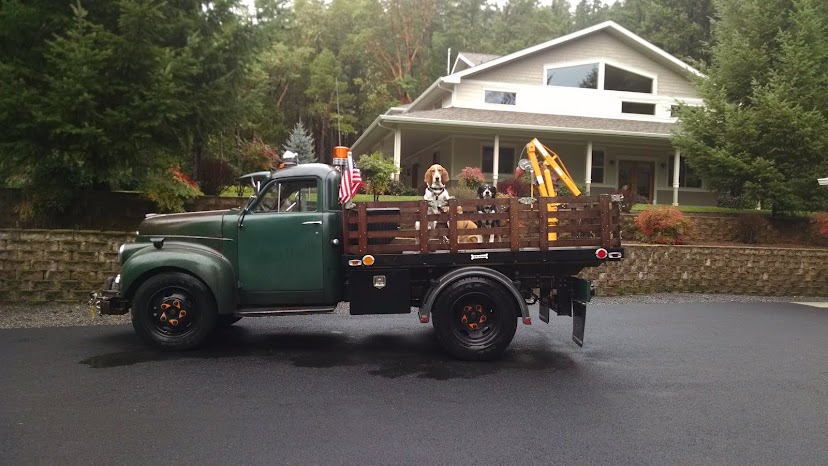This is the return line termination at the filler pipe just inside of the cab. I bent a piece of 1/4" plate steel to the curvature of the filler pipe and welded it onto the filler pipe. the plate was drilled and taped for a 1/8" MIP to 5/15" inverted flare ell and a Cunifer pipe ( http://www.fedhillusa.com/ ) connected.
This is the return line coming out of the floor where I drilled a hole for a rubber 5/16" ID grommet.
Here we have the manual fuel cut-off valve, fuel filter and fuel pump. I made a mounting plate that attaches to the frame on the bottom and back. The back of the plate is attached by two 2" long 1/4-20 standoffs. This is a 6 volt Carter pump that has both power lines isolated so it can be used on positive or negative ground. The 5/16" Cunifer line from the fuel tank is in a loop (partially shown) to allow tank movement from frame twisting. The only issue here is that there is a hard connection between the fuel pump and the fuel filter conducting the fuel pump vibration a path to the frame. There is a reason why Carter provides hose barbs with their pump!!! Future plan here is to replace the hard line with two 90 degree MIP to hose barbs and run hose between the two to provide a vibration isolation loop. The good news is that you can stop at a traffic light and KNOW that the fuel pump is running (assuming the stereo is turned down)...
Here is the two connections to the carburetor front one is the fuel supply and the rear (red) one is the fuel return. I painted the fuel return 1/8" MIP to 5/16" inverted flare adapter red to identify it as modified. To modify it I filled the fuel path with 50/50 solder and then drilled a 0.04" hole to provide a restriction. The two rubber hoses are the standard hose used to connect the fuel line to the mechanical pump in a standard M truck that I bought from SP.
Here is a picture of the bracket I made to hold the two lines leading up to the carburetor. This is basically an aluminum "L" bracket that holds four rubber insulated 5/16" clamps. Bracket mounts to the top on the frame.
Another view of the bracket looking straight down. the two lines are routed under the engine cross member with the brake line to the passenger front side.
This is a picture of the passenger side of the engine showing the oil pressure switch for controlling the fuel pump. This is a 5 LB SPDT (Single Pole Double Throw) switch that provides power to the fuel pump when starting the engine and when there is oil pressure and ignition on. I have this switch controlling a relay that in turn powers the fuel pump. Probably not necessary but I installed a box containing eight 60 AMP relays and this setup will reduce the load on the pressure switch giving it a longer life in addition to drawing less current on the ignition circuit.






















